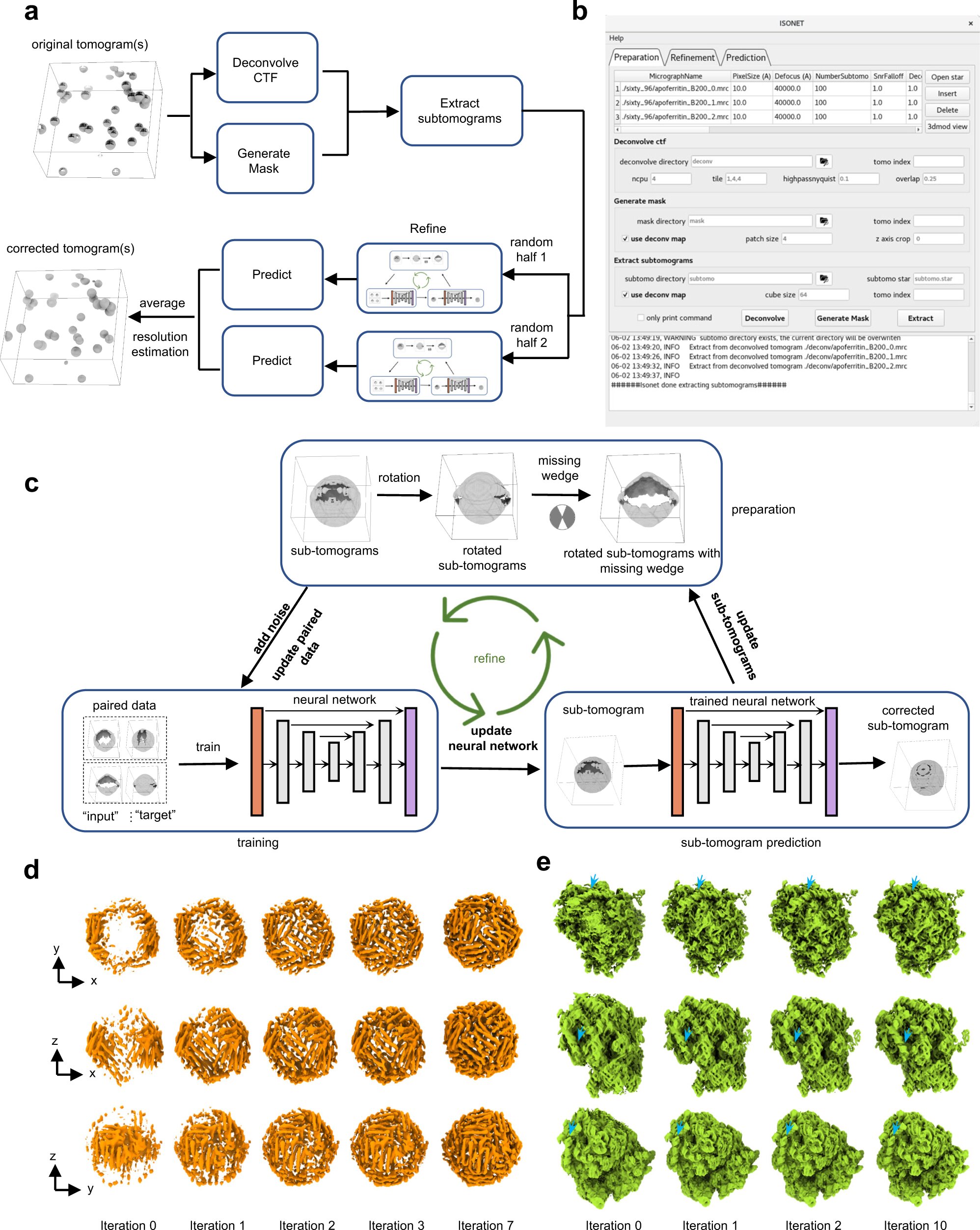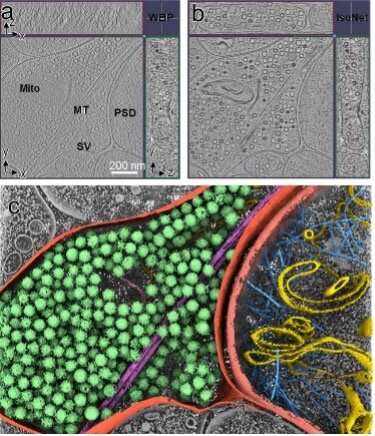Researchers develop software package for isotropic reconstruction for electron tomography with deep learning


In a study published in Nature Communication, a team led by Prof. Bi Guoqiang from the University of Science and Technology of China (USTC) and Shenzhen Institute of Advanced Technology, Chinese Academy of Sciences (CAS), together with collaborators from the United States, developed a software package named IsoNet for the isotropic reconstruction in cryogenic electron tomography (cryoET). Their work effectively solved the intrinsic “missing-wedge” problem and low signal-to-noise ratio problems in cryoET.
Anisotropic resolution caused by the intrinsic “missing-wedge” problem has long been a challenge when using CryoET for the visualization of cellular structures. To solve this, the team developed IsoNet, a software package based on iterative self-supervised deep learning artificial neural network.
Using the rotated cryoET tomographic 3D reconstruction data as the training set, their algorithm is able to perform missing-edge correction on the cryoET data. Simultaneously, a denoising process is added to the IsoNet, allowing the artificial neural network to recover missing information and denoise tomographic 3D data simultaneously.
By performing IsoNet reconstructions on simulated sub-tomograms of apoferritin and ribosome, the team obtained results comparable to low-resolution atomic models. Reconstructions were also done for the tomographic 3D data of the immature HIV capsid, the paraflagellar rod and the neuronal synapse of cultured cells, all of which gave impressive results.
It is noteworthy that after using the IsoNet to reconstruct the tomogram of the neuronal synapse, which typically contains a large number of proteins, membranous organelles, cytoskeleton and other complex structures, the tomographic 3D information of the vesicles, mitochondria, microtubules, microfilaments, cell membranes and protein complexes were all well recovered.

After its release, IsoNet has raised lots of discussions, an important one of which is how IsoNet implements missing-wedge correction. A major deduction is that the neural network can learn the features of biological structures like proteins at different angles in 3D space during training, and supplement this information to the missing-wedge direction, similar to the 3D averaging of single-particle cryo-electron microscopy.
Therefore, by continuously optimizing the neural network structure and expanding the training set, IsoNet will be able to recover high-resolution 3D structure information of each protein molecule in the cell, consequently laying a solid foundation for the visualization of the high-resolution 3D structure and distribution of each protein molecule in situ.
According to experts Dimitry Tegunov and others experts, the concept of IsoNet would be the future development direction of cryoET.
Yun-Tao Liu et al, Isotropic reconstruction for electron tomography with deep learning, Nature Communications (2022). DOI: 10.1038/s41467-022-33957-8
Provided by
University of Science and Technology of China
Citation:
Researchers develop software package for isotropic reconstruction for electron tomography with deep learning (2022, November 17)
retrieved 17 November 2022
from https://techxplore.com/news/2022-11-software-package-isotropic-reconstruction-electron.html
This document is subject to copyright. Apart from any fair dealing for the purpose of private study or research, no
part may be reproduced without the written permission. The content is provided for information purposes only.
For all the latest Technology News Click Here
For the latest news and updates, follow us on Google News.
